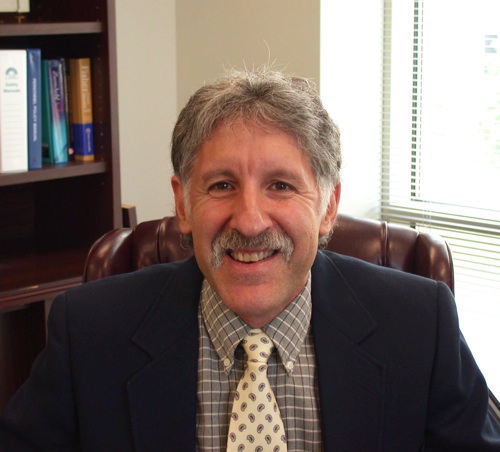An Irreplaceable Scientist
Colleagues Pay Tribute to Lawrence M. Sayre (1951-2009)
By Robert Salomon and Michael Zagorski
Department of Chemistry

Photo: courtesy of the Department of Chemistry
Our friend and colleague, Larry Sayre, died May 8, 2009, at the age of 57. He will be deeply missed as a friend, a scientist and a pillar of Case Western Reserve University.
Larry received his undergraduate degree with highest honors from the University of California, San Diego, and his Ph.D. from the University of California, Berkeley. After spending a year with Vega Biochemicals and three years as a postdoctoral researcher in medicinal chemistry at the University of Minnesota, he joined our chemistry department in 1981. Larry rose through the ranks to become the Frank Hovorka Professor of Chemistry in 2000, and he served as department chair from 2001 to 2008. In addition, he held professorial appointments in pathology and environmental health sciences in the Case Western Reserve University School of Medicine.
Larry was a brilliant and hard-working scientist. During his 27 years at Case Western Reserve, he published more than 190 papers. In addition, he served on a number of study sections for the National Institutes of Health (NIH), on the editorial board of the journal Chemical Research in Toxicology, and on the Long-Range Planning Committee for the Medicinal Chemistry Division of the American Chemical Society. His grants and honors included a five-year Research Career Development Award from NIH (1987) as well as the Sigma Xi Research Award (1988) and the Mortar Board "Top Prof" Award (1997) from CWRU.
Among his most significant discoveries, Larry showed how protein molecules are modified or damaged by chemical reactions in the human body. His findings have had far-reaching consequences for research into the mechanisms of aging and disease.
Larry's influence was multiplied by his knack for engaging other chemists and biomedical researchers in collaborative endeavors. His work with faculty members in the Department of Pathology, including Mark Smith, Vincent Monnier, George Perry, and Pierluigi Gambetti, revealed the role of protein damage in aging, diabetes and neurological diseases such as Alzheimer's. In other collaborations with researchers at the School of Medicine and the Cleveland Clinic, Larry applied his insights to the study of cardiovascular disease, end-state renal disease and the formation of cataracts.
His discoveries also led to breakthroughs in our understanding of age-related macular degeneration (AMD). Researchers at the Cleveland Clinic's Cole Eye Institute found that modified proteins accumulate in the retinas of people with AMD, triggering a destructive immune response and the pathological sprouting of capillaries into the retina. Other Cleveland Clinic scientists are applying Larry's findings to the investigation of cancer growth and wound healing.
Many Cleveland researchers were successful in obtaining NIH grants because of Larry's participation in their work, Monnier says. This illustrates "how pivotal and literally irreplaceable he was as a scientist."
"I will always remember, and continue to strive for, his insistence on rigor and thoroughness, which ultimately results in excellence," Smith says. "What I loved about Larry — aside from his summer wardrobe of garish Hawaiian shirts and requisite humor to wear such stuff — was his willingness to listen to completely and utterly nonsensical chemistry talk from me and gently set me straight." Echoing these sentiments, Gambetti says, "Larry had a relaxed attitude but invariably accurate knowledge."
Vernon Anderson, a former chemistry faculty member who is now an NIH program officer, adds, "There was always the unspoken guidepost: 'Will Larry be convinced?' His support, suggestions, collaboration and friendship during my years at CWRU will remain with me forever as the prime example of what a university community could and should be."
Larry was a talented pianist and an avid jazz lover, and our evenings out with him generally focused on establishments with live musical entertainment. We had the privilege of developing lasting friendships with him, and we often traveled together and spoke of our families. A genuine and very approachable person, Larry cared about the people with whom he worked. His impact on the lives of his colleagues, students and friends was profound, and the memory of this gentle man inspires us all.
A version of this tribute appeared in Chemical Research in Toxicology (August 2009). We thank the journal's editor, Lawrence J. Marnett, for permission to adapt the original essay for art/sci.
In Larry Sayre's memory and in accordance with his wishes, the Department of Chemistry has established a fellowship to be awarded to outstanding graduate students in their third year of study. For information about contributing to the Lawrence Sayre Graduate Fellowship in Chemistry, please contact the college's development and external relations office at (216) 368-0097, (800) 360-5308 or cassupport@cwru.edu.
